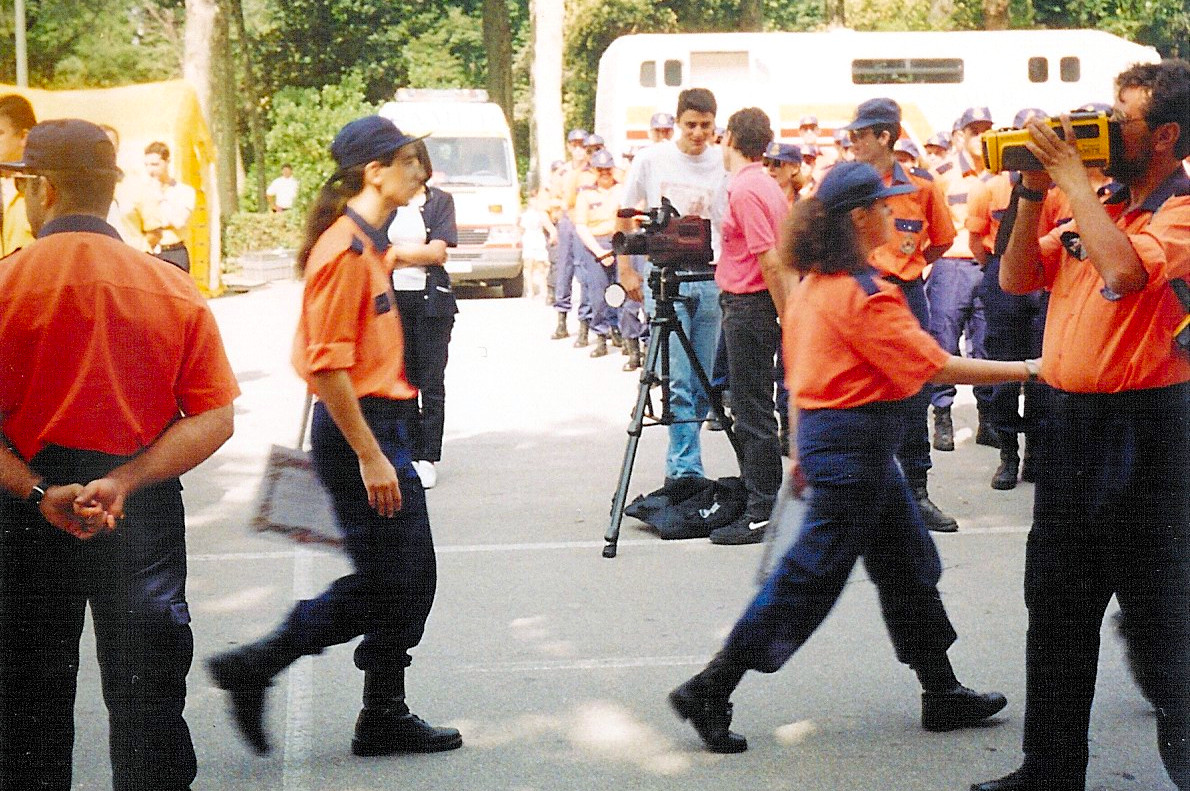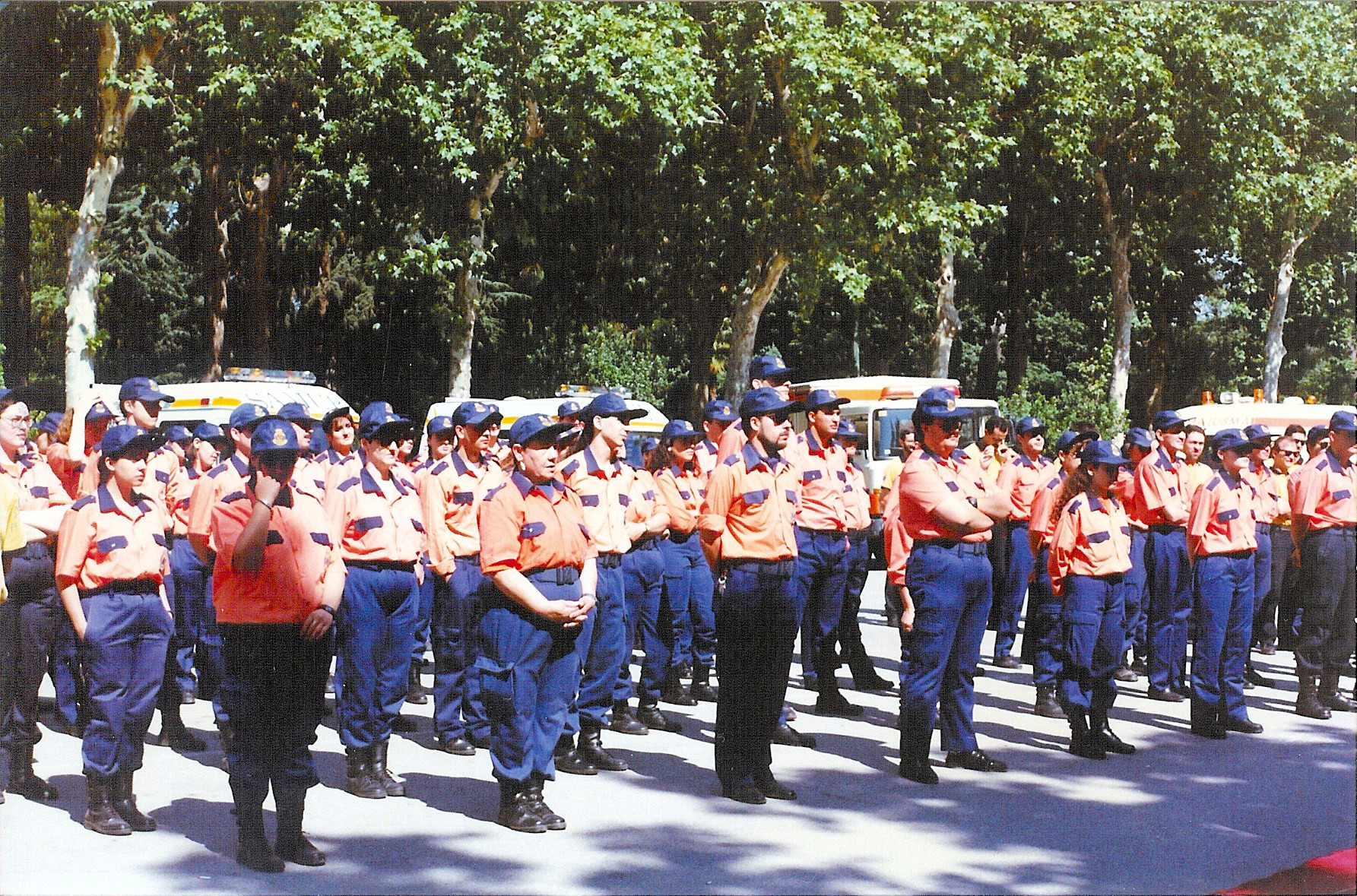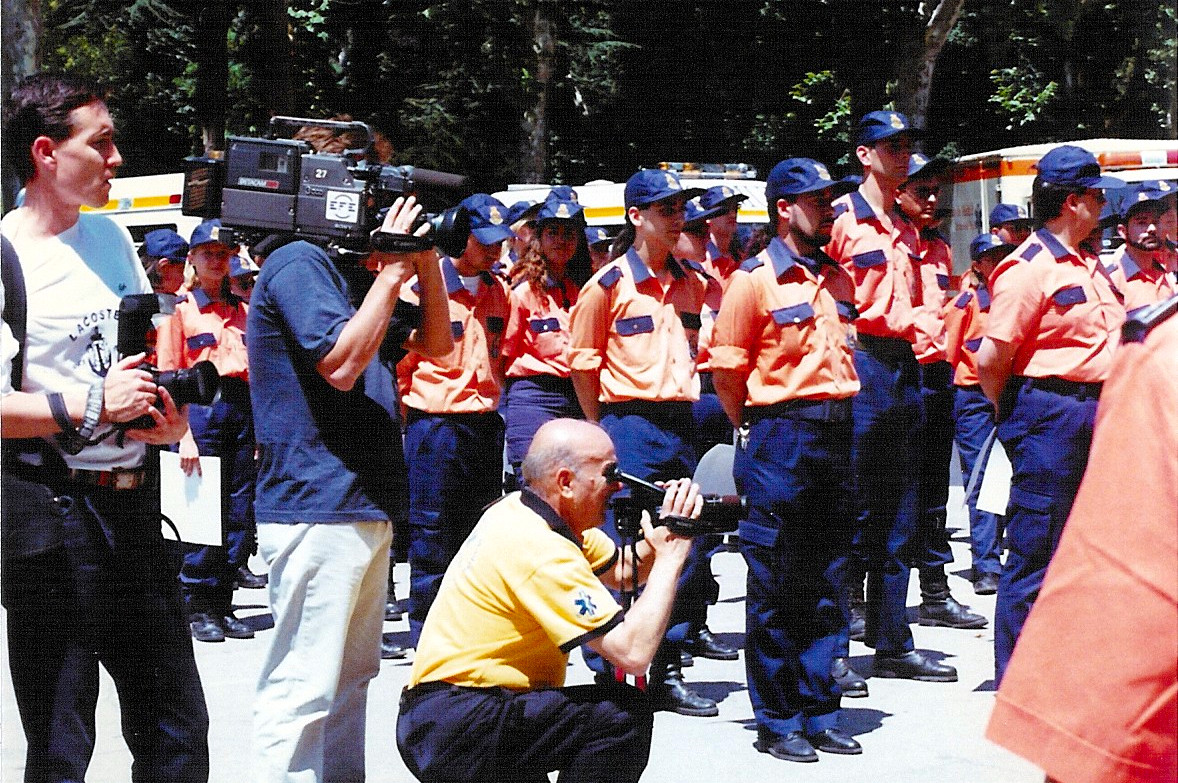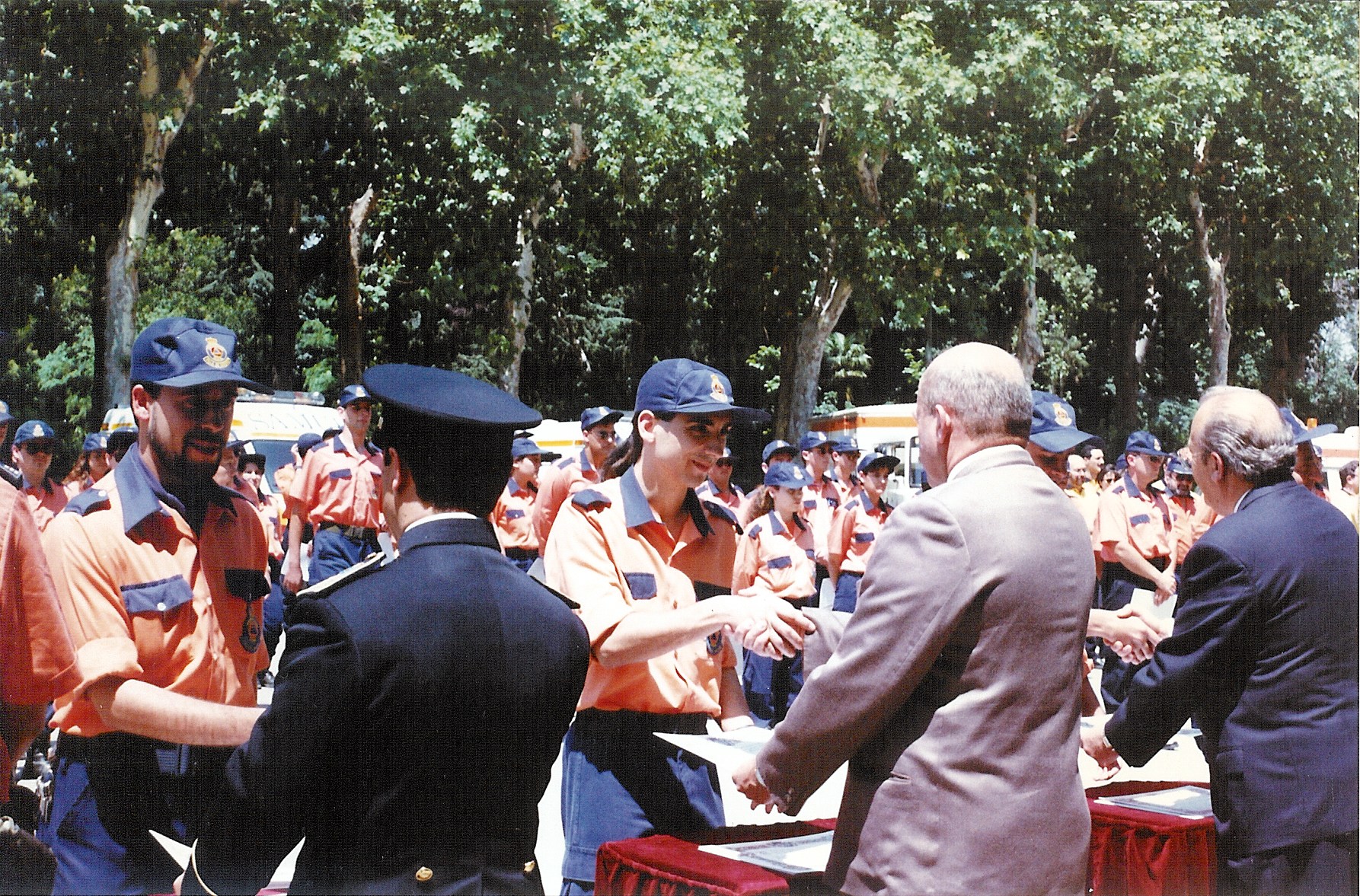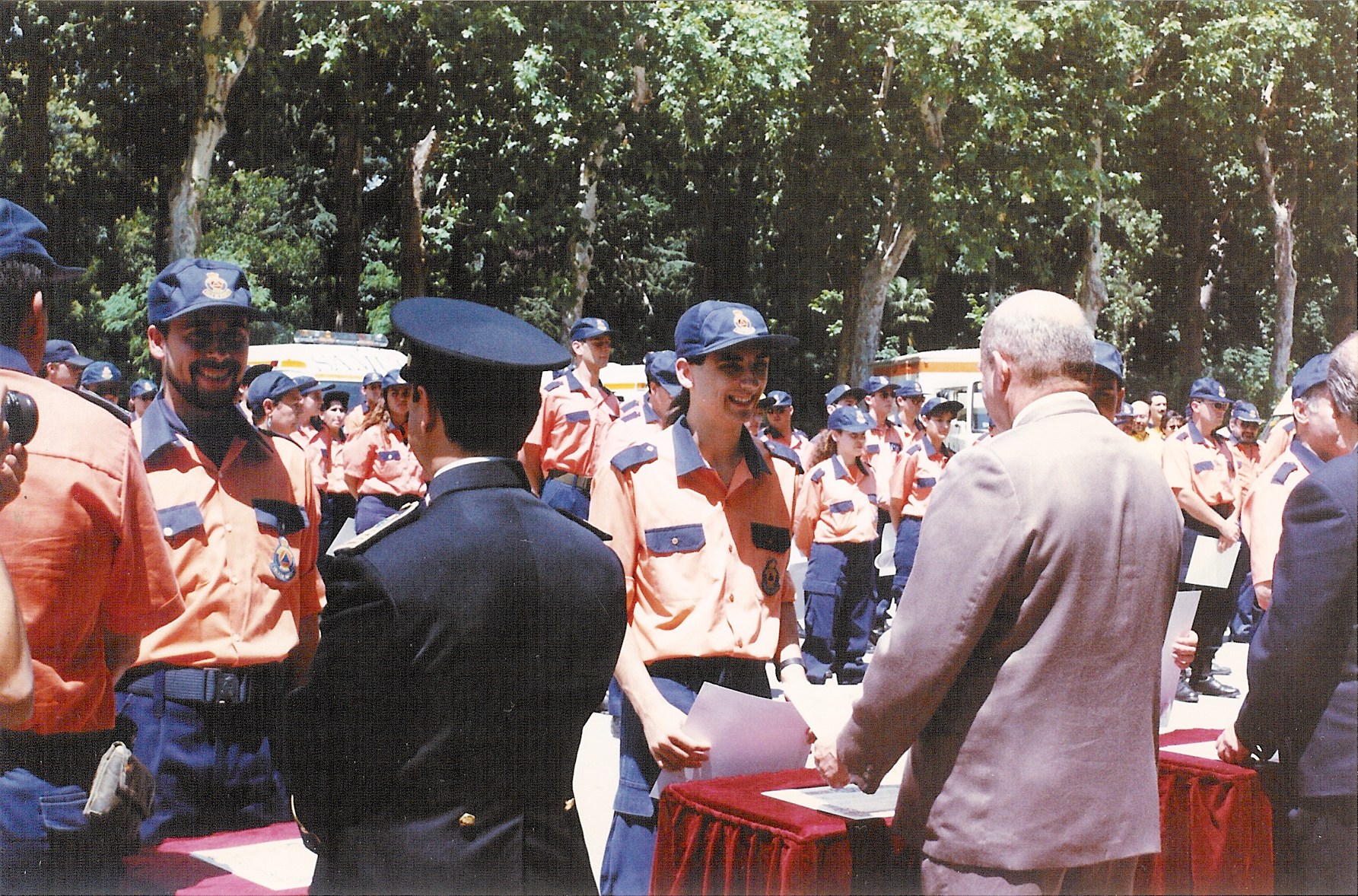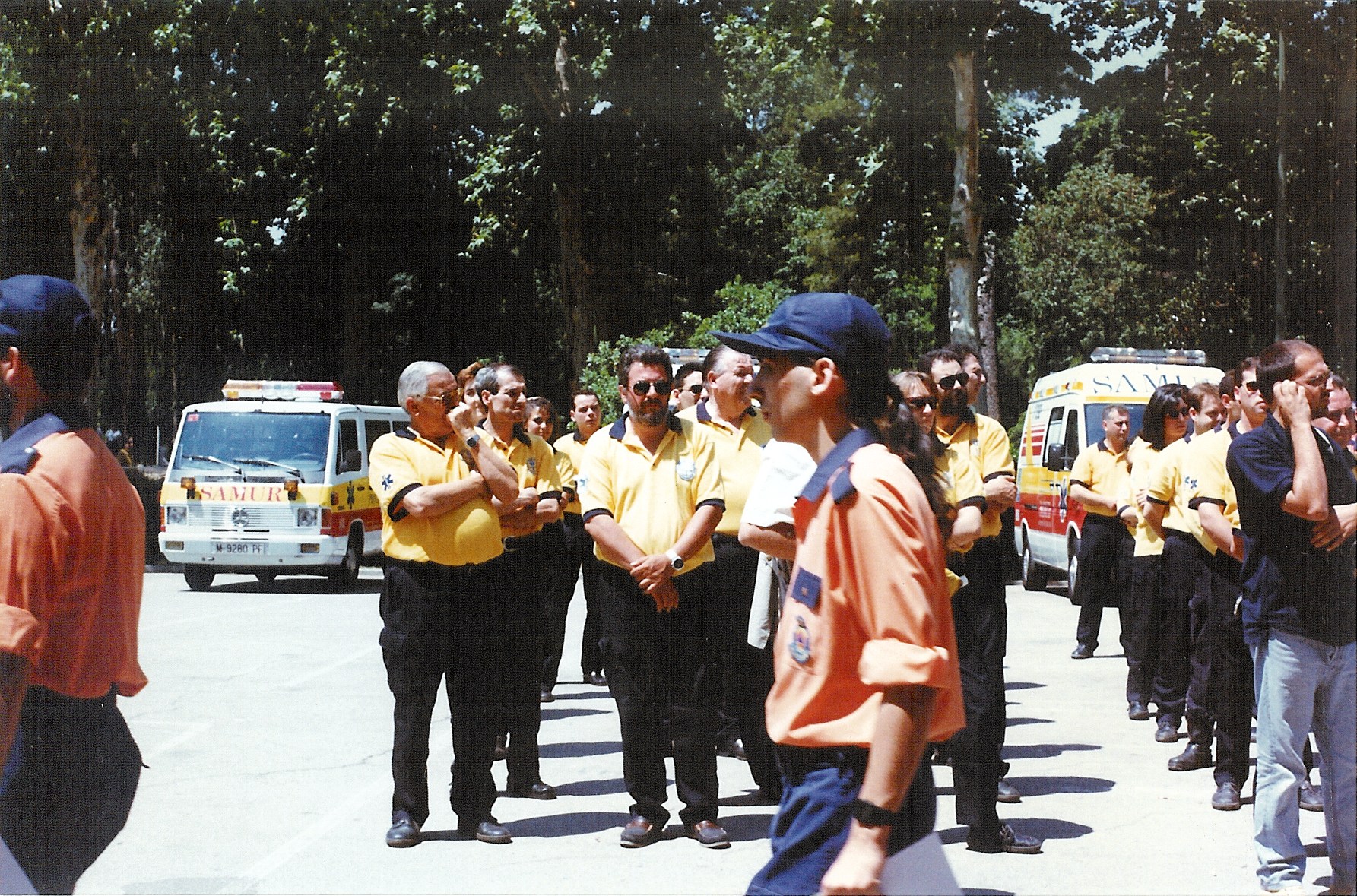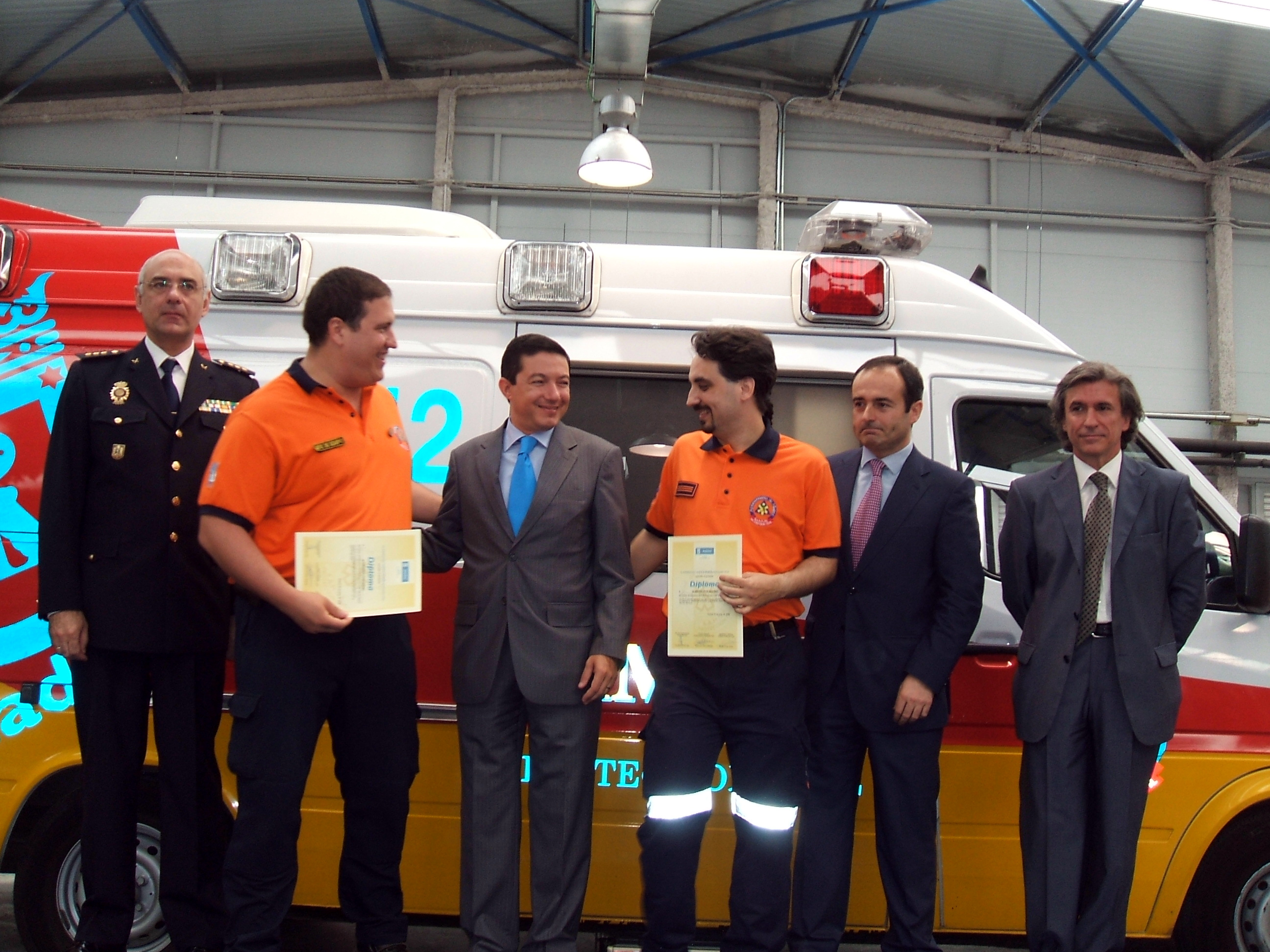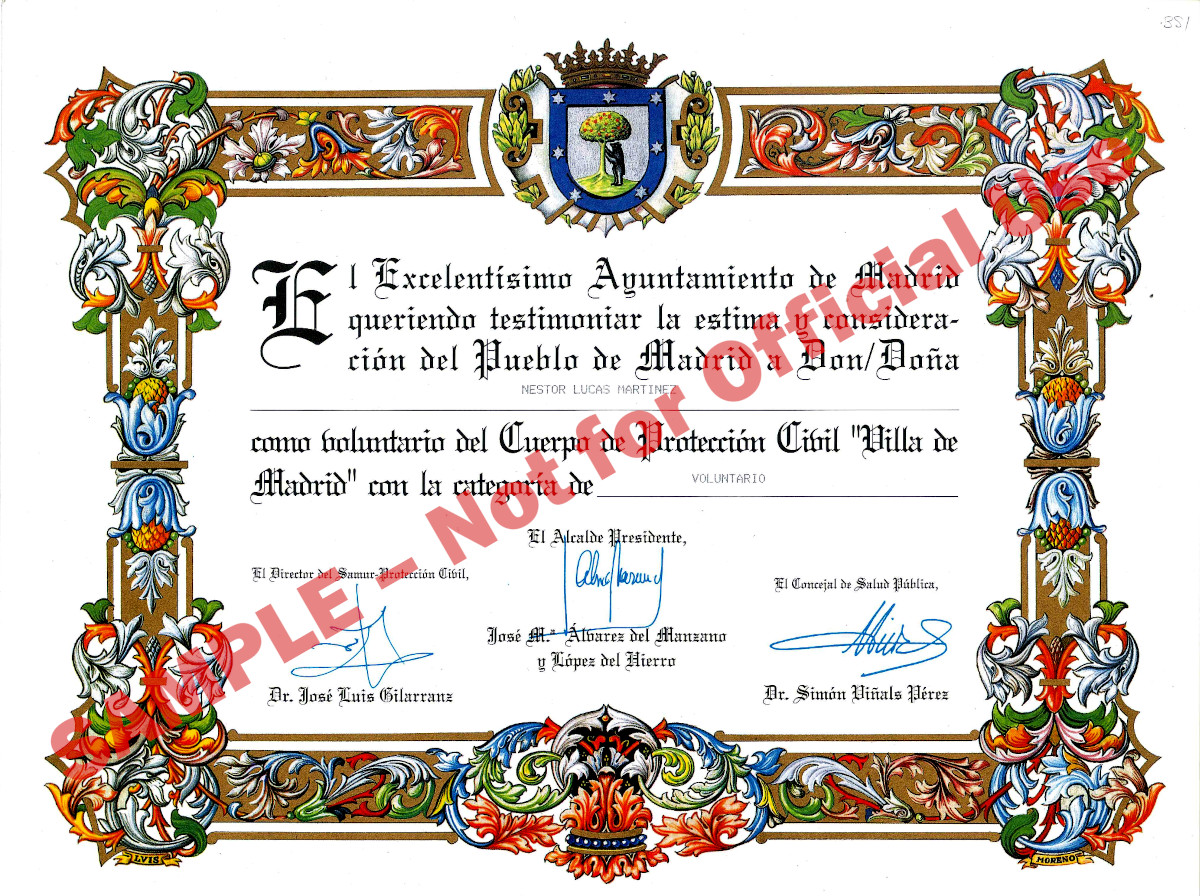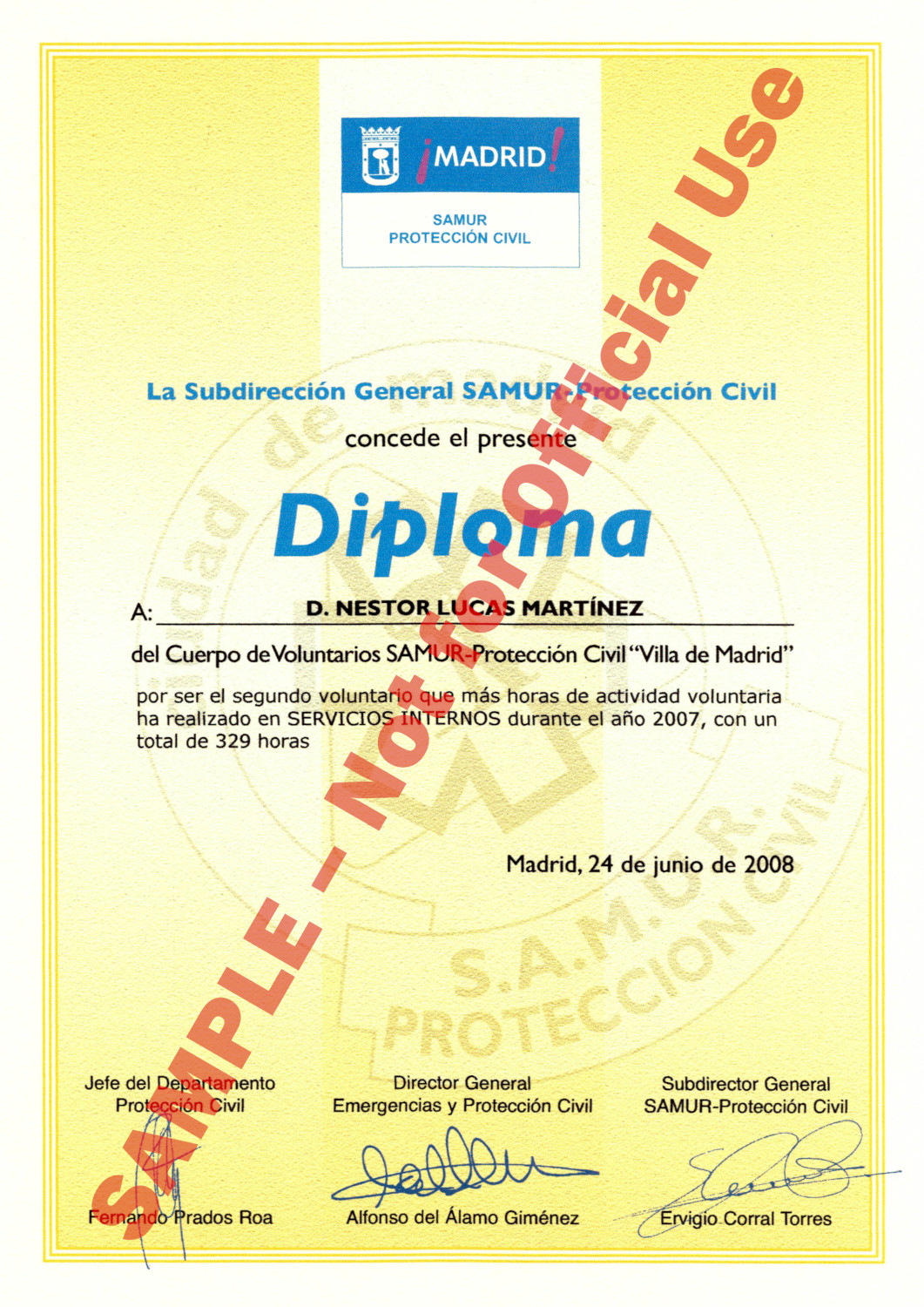Looking Back on SAMUR-Protección Civil Day
🦺 Fifteen years in orange, and one date that always stood out: June 27.
Every year on June 27th, the SAMUR-Protección Civil service in Madrid holds a celebration known as Día del SAMUR, officially commemorating the patron saint of the service — but, in practice, far more than that. For many of us volunteers, it was a day to recognize commitment, celebrate new beginnings, and reflect on the shared values that held the team together.
I served as a volunteer for 15 years, and while the origin of the day is tied to a religious figure, what I want to talk about is the civil, inclusive event that took place annually — the one that welcomed new members and honored those who had gone the extra mile.
The First One (1995): From Aspirant to Active Volunteer
My first June 27th celebration was in 1995, the year I officially transitioned from aspirant to active volunteer. That year was memorable for many reasons: not only was it the start of my service, but it also marked the beginning of the formal integration between Protección Civil’s volunteer corps and SAMUR, which was still in its earlier phase of development.
The recognition ceremony took place in the morning. I still remember a RTVE news camera suddenly pointed at me while we waited for our turn. I walked the stage with my fellow volunteers, picked up a diploma — not mine, of course, they were rarely sorted correctly back then — shared some laughs, and then rushed home to grab a bite before heading off to university for a programming exam. I didn’t think much of it until a professor watching over the exam approached me and asked, “Weren’t you just on TV?”
He wasn’t wrong.
Year Two and Beyond: Duty, Recognition, and Realities
In my second year, I participated again — more out of duty than excitement. The volunteer numbers had dropped noticeably, and there was a need to show presence. Same process, same unorganized diplomas, but again, what mattered most was the camaraderie.
That year, a fellow volunteer received a medal of merit for an exemplary (and somewhat controversial) action. There was debate, yes, but few could deny the dedication it reflected. Over time, these events became more routine, and I drifted from them — until I took on command roles and found renewed purpose in showing up to support new team members.
Numbers vs. Commitment
As the years passed, I developed a complicated relationship with how recognition was handled. Awards for volunteers who crossed hour thresholds — 5,000 hours of service, 10,000 hours of service, and beyond — often overlooked the context of those contributions. Some gave everything they could, in ways that weren’t always visible or quantifiable. Others, with ample time and flexibility, would stack hours quickly… only to disappear after a few years.
Longevity doesn’t always equal depth of commitment.
In my final year, I received a diploma recognizing the second-highest number of internal service hours — office shifts, team coordination, and behind-the-scenes support that rarely makes headlines but is essential for day-to-day operations.
By then, I had already come to terms with how recognition was often tied to sheer numbers rather than context or continuity. Sometimes, volunteers who quietly supported the service year after year — despite personal or professional limitations — were overshadowed by those with more flexible schedules or more visible contributions.
💭 Final Thoughts
This day remains a meaningful tradition — a time when volunteers, emergency technicians, nurses, doctors, and all members of the service come together to reflect, recognize, and reconnect through shared effort, professional commitment, and a strong sense of community.
Moments like these — standing in uniform among colleagues, welcoming new generations, and honoring quiet dedication — are the ones that stay with you.
They’re the ones that stayed with me.
🖼️ Gallery of pictures



